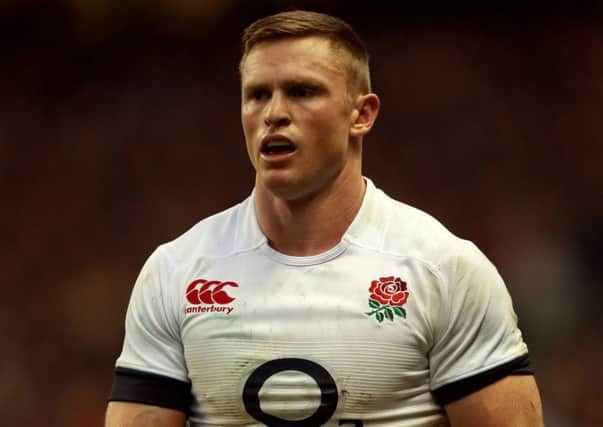Allan Massie: Sporting oldies can still be goodies


It’s the same in the men’s game. All four semi-finalists at Wimbledon were in their thirties, and neither Roger Federer, who lost to Kevin Anderson in the quarters, nor Andy Murray (absent, still recovering from an operation) were among them. If Miss Danilovic is the first woman born this century to win a WTA title, no man born since 1990 has yet won Wimbledon. In contrast, the great Swedes – Bjorn Borg, Mats Wilander and Stefan Edberg – had retired long before they reached their early thirties present age; and so indeed had John McEnroe and Boris Becker.
There’s likely to be quite a lot of chatter about age as we begin this new rugby season which will culminate in the World Cup in Japan. To be accurate, the RWC, running from 20 September to 2 November, really belongs to next season, but it’s hard not to regard it as the culmination of the one just about to kick off. I guess there will be quite a few people checking birth-dates, asking at one end of the spectrum if the young man is ready, at the other if the player approaching the veteran category is over the hill or has one last campaign in him.
Advertisement
Hide AdAdvertisement
Hide AdEddie Jones has just recalled Chris Ashton, aged 31, to his training squad. Given that Ashton has returned from Toulon to Saracens, and done so in the hope of playing in the World Cup, Jones’ inclusion of him in a large squad may have a touch of good PR about it.
Ashton is, of course, a prolific try-scorer, but Jones isn’t short of try-scoring wings – Anthony Watson, Jack Nowell, Jonny May, Elliot Daly, not to mention the brilliant Christian Wade, for whom, however, he seems to have no time. One has the suspicion that some of the gloss having come off Jones in recent months, he is alert to the need to cultivate better relations with Press and public. So, in South Africa, he yielded to demand and brought back Danny Cipriani (d.o.b 2/11/87, first capped in March 2008). If England were to reach the RWC final and Cipriani to be in the side, it would be his 32nd birthday, while Ashton would have passed his six months previously.
That would once have been considered a bit long in the tooth. When the selectors came together to pick the 1955 Lions team to tour South Africa, they made the somewhat arbitrary decision not to consider anyone of 30 and over. So Ireland’s greatest-ever fly-half, Jack Kyle, outstanding on the 1950 Lions tour of Australia and New Zealand, was among those not wanted on the voyage. I doubt if any country will take such a hard line when picking their party for Japan. It’s generally accepted that you need experience to perform well in the World Cup, though experience is perhaps better measured in the number of caps won than years completed.
Gregor Townsend is – perhaps – going to be in a happier position than Jones, and not only because at least where rugby is concerned, the media in Scotland will usually be more balanced, less likely to swing overnight from adulation to indignation and contempt, than their counterparts in England. More to the immediate point he is likely by this time next year to have assembled a squad of players with a good deal of international experience and many caps, but still mostly on what the Lions selectors in 1955 would have considered the right side of 30.
One might indeed at the moment say that the only two over-30s he might consider indispensable would be Greig Laidlaw and John Barclay, in both cases as much perhaps for their influence off the field as on it. Barclay, being injured, will miss this autumn’s internationals, which, in view of the demands on bodies to be made between now and the tournament in Japan, may be no bad thing.
If selection is indeed the most important part of a coach’s job, the scrum-half position poses nice problems for Townsend. Much may change by next summer, but at present you might expect the three No 9s to be taken to Japan would be Laidlaw, Ali Price and George Horne. But which will be first choice is anybody’s guess. On the evidence of last autumn you might have put Ali Price , younger than Laidlaw, older than Horne, in pole position. Laidlaw edged Price out again in the Six Nations, then Horne starred on the summer tour, especially in Argentina when Price was injured. Laidlaw has the wise old head, both Price and Horne a puppyish exuberance and sense of adventure – but even Horne, though he sometimes looks as if he should still be at school, is a couple of years older than Miss Danilovic. It’s improbable anyone born this century will star in Japan, while players as old as Andy Murray, Rafa Nadal and Novak Djokovic may yet do so.